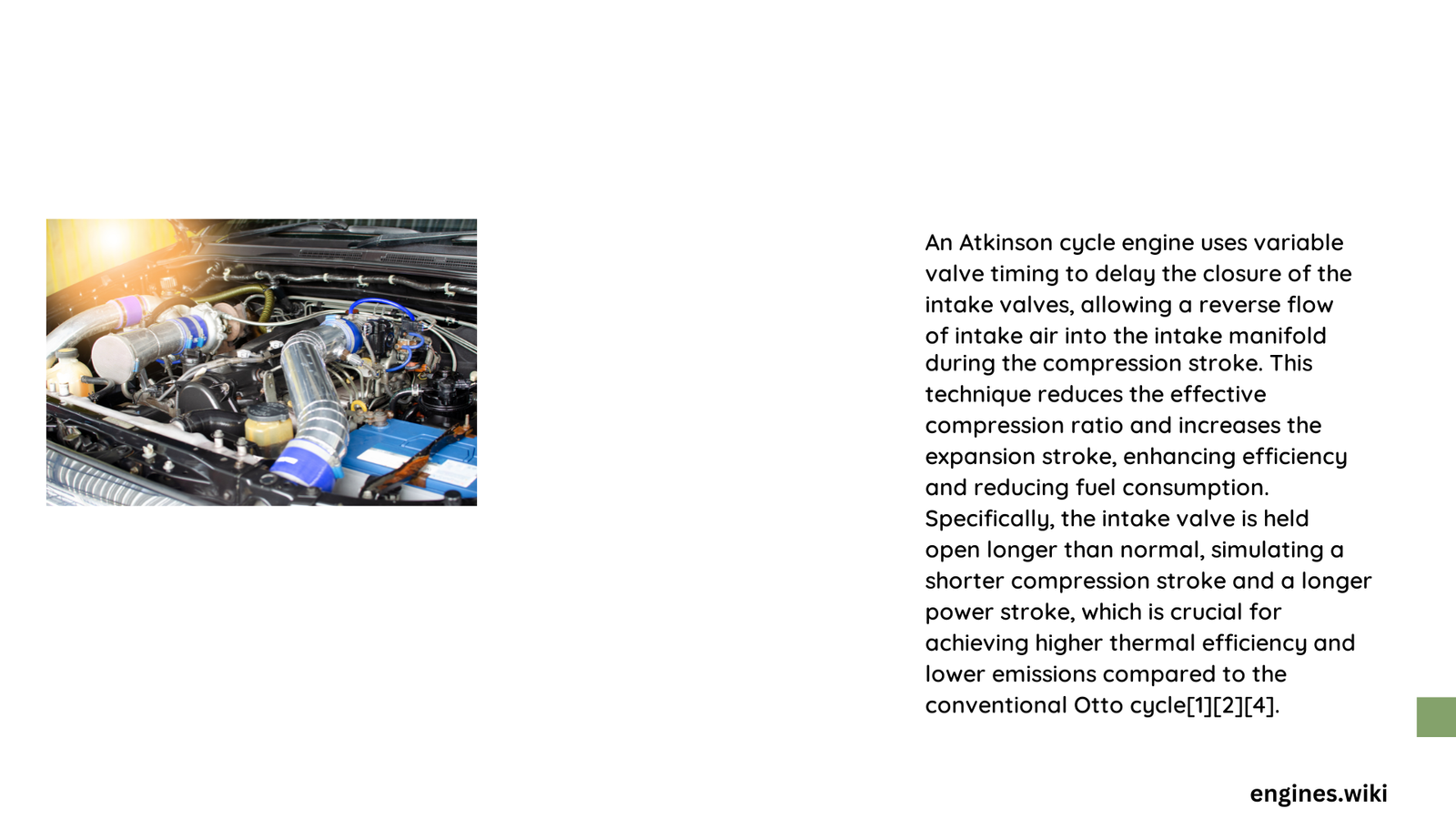An Atkinson cycle engine leverages sophisticated variable valve timing (VVT) technologies to revolutionize internal combustion engine efficiency. By strategically manipulating intake valve closure during the compression stroke, these advanced engines can achieve remarkable improvements in thermal efficiency, reduce pumping losses, and optimize fuel consumption across various operating conditions.
What Makes Variable Valve Timing Critical in Atkinson Cycle Engines?
Variable valve timing represents a transformative approach to engine design, allowing unprecedented control over the combustion process. Unlike traditional fixed valve timing systems, VVT enables dynamic adjustments that fundamentally alter how an engine breathes and converts fuel into mechanical energy.
How Does Late Intake Valve Closing Work?
The core mechanism of Atkinson cycle engines involves a unique valve timing strategy:
| Valve Timing Technique | Performance Impact |
|---|---|
| Late Intake Valve Closing | Reduces effective compression ratio |
| Extended Expansion Stroke | Increases thermal efficiency |
| Controlled Air-Fuel Mixture Escape | Minimizes pumping losses |
Key Advantages of Late Intake Valve Closing
- Improved Thermal Efficiency: Up to 10-15% efficiency gain compared to traditional Otto cycle engines
- Reduced Pumping Losses: Minimizes energy wasted during compression and intake stages
- Optimized Fuel Consumption: Enables more effective energy conversion
What Are the Precise Mechanisms of Variable Valve Timing?
Atkinson cycle engines employ several sophisticated VVT strategies:
- Hydraulic Valve Actuation
- Allows dynamic valve timing adjustments
- Provides precise control over valve movement
-
Enables real-time optimization based on engine conditions
-
Electronic Valve Control
- Uses sensors to determine optimal valve timing
- Adapts to varying load and speed requirements
- Minimizes energy waste during different operational modes
Can Variable Valve Timing Improve Overall Engine Performance?
While Atkinson cycle engines prioritize efficiency over raw power, VVT helps mitigate potential performance limitations:
- Hybrid Vehicle Integration: Electric motor assistance compensates for reduced low-end torque
- Emissions Reduction: Lower combustion temperatures decrease harmful exhaust gases
- Adaptable Power Delivery: Intelligent valve timing maintains consistent performance
Technical Considerations and Challenges

Implementing advanced VVT in Atkinson cycle engines involves addressing several critical factors:
- Cost Implications: Advanced systems require more complex components
- Maintenance Requirements: Hydraulic and electronic systems need specialized servicing
- Performance Trade-offs: Efficiency gains might slightly compromise peak power output
What Future Developments Can We Expect?
Emerging technologies continue to refine Atkinson cycle engine designs:
- Artificial intelligence-driven valve timing optimization
- Advanced materials reducing mechanical complexity
- Enhanced sensor technologies for more precise control
Conclusion
Variable valve timing represents a pivotal innovation in Atkinson cycle engine design, offering a sophisticated approach to improving internal combustion engine efficiency. By dynamically controlling valve movements, these engines demonstrate remarkable potential for reducing fuel consumption and environmental impact.
